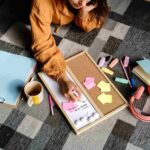Learning photography can seem daunting, but with the right resources and approach, it’s achievable for anyone. This guide provides a foundational understanding of core concepts, equipping you to capture stunning images and tell compelling stories through your lens. Whether you aspire to shoot landscapes, portraits, or anything in between, mastering the fundamentals is key.
Understanding the Basics of Photography
Photography, at its core, is about capturing light. Your camera acts as a tool to control and manipulate light entering the lens, creating an exposure. Understanding this fundamental principle is crucial for taking control of your images.
The Importance of Light
Light is the essence of photography. The quality, direction, and intensity of light dramatically impact the mood, texture, and overall feel of your photographs. Learning to see and interpret light is a skill that develops with practice and observation. Consider how the golden hour – the period shortly after sunrise or before sunset – bathes scenes in warm, soft light, creating a magical atmosphere. Conversely, harsh midday sun can result in strong shadows and washed-out colors.
Mastering Exposure
Exposure refers to the amount of light that reaches your camera’s sensor. A correct exposure results in a well-balanced image, with details visible in both the highlights and shadows. Three primary elements control exposure:
-
Aperture: The size of the opening in your lens, controlling how much light enters. It’s measured in f-stops (e.g., f/2.8, f/5.6). A wider aperture (smaller f-number) allows more light and creates a shallow depth of field, blurring the background. A narrower aperture (larger f-number) lets in less light and results in a greater depth of field, keeping both foreground and background in focus.
-
Shutter Speed: The amount of time the camera’s shutter stays open, exposing the sensor to light. It’s measured in seconds or fractions of a second (e.g., 1/200s, 1s). Faster shutter speeds freeze motion, while slower shutter speeds create motion blur.
-
ISO: Your camera’s sensitivity to light. Lower ISO values (e.g., ISO 100) are less sensitive and produce cleaner images with less noise, ideal for bright conditions. Higher ISO values (e.g., ISO 3200) are more sensitive, allowing you to shoot in low light, but can introduce noise or grain.
These three elements work together. Adjusting one setting will often require adjustments to the others to maintain a proper exposure. Learning to balance these settings is essential for achieving your desired creative effect. For example, to capture a sharp image of a moving subject, you’ll need a fast shutter speed. This might require widening the aperture or increasing the ISO to compensate for the reduced light.
Where to Begin Your Photography Journey
The best way to start is by understanding your camera and how it operates. Familiarize yourself with its settings, menus, and functionalities. Experiment with different shooting modes, such as aperture priority (Av or A) or shutter priority (Tv or S), which allow you to control one aspect of exposure while the camera automatically adjusts the others.
Online Resources for Learning Photography
The internet provides a wealth of resources for aspiring photographers. Online courses, tutorials, and communities offer valuable insights and guidance. You can find answers to specific questions, learn new techniques, and connect with fellow photographers.
Practice and Experimentation
Ultimately, the key to mastering photography is practice. Experiment with different settings, compositions, and lighting conditions. Don’t be afraid to make mistakes; they are valuable learning opportunities. Shoot regularly, review your images critically, and identify areas for improvement.
Conclusion
Learning photography is a journey of continuous learning and discovery. By understanding the fundamentals of light, exposure, and camera settings, and by dedicating yourself to practice and experimentation, you can unlock your creative potential and capture the world as you see it. Embrace the process, and enjoy the journey!
